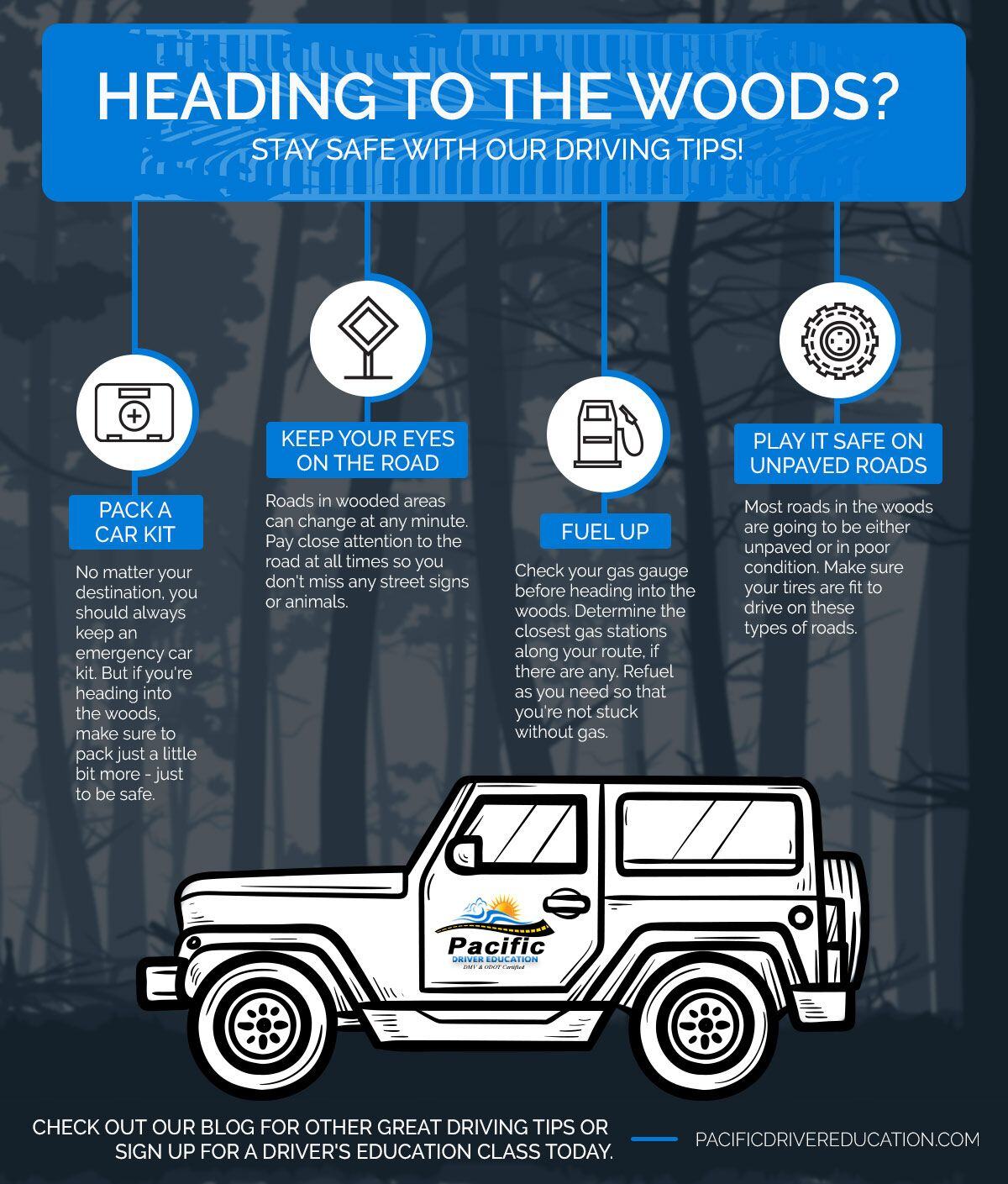The Pacific Northwest is packed full of beautiful wooded areas but driving in the woods can be dangerous. If you’re planning to check some of these places out, there are a few safety precautions to consider as visibility is low and the roads can be confusing to navigate. Here are our tips so that your upcoming adventure in the woods is safer.


Tips for Driving in the Woods

Pay Attention on Winding Roads
Keep your focus on the road ahead of you, as it may change unexpectedly. Most roads in the woods aren’t straight paths, they could curve and turn at any minute. No matter if it’s day or night, keep your eyes glued to the road when driving through the woods. If you take your eyes off of the road for just a second, you could be putting yourself or someone else in danger.
Path Obstructions
At any given moment, something could be obstructing the path in front of you. Something could jump out onto the road from the trees or be there before you wind a corner. Protect the lives of pedestrians, bicyclists, and animals by carefully watching the road as you drive. You might periodically see signs for animal crossings but in general, look out for animals that could jump out from the woods at any given moment. Also look out for any natural obstructions such as fallen trees, rocks, and floods. Running your car into these obstacles could greatly damage your car, or even worse, send you flying off of the road.
Street Signs
Pay attention to all street signs. At night, follow reflecting signs which can help you to determine which direction the road may go next. However, you might not always see them, so it’s good practice to just keep paying attention to what’s happening in front of you.
Speed limit signs are good to look out for. Speeds can change often, which could catch you off guard. Speed limits tend to decrease just before big curves in the road or at the bottom of big hills. You might think that nobody is watching you, but make sure you’re always going the speed limit in the woods, as they’re in place for your safety.
Other signs to look out for are for driveways and upcoming intersections - but these signs might not always be posted. Always assume that other cars aren’t paying attention, and practice defensive driving. Slow down and glance across intersections and driveways before crossing them, just in case.
Be Careful on Unpaved Roads
Plan for roads in the woods to be unpaved or in poor condition. Roads in the woods are usually not well-kempt simply because there is not as much traffic on them. Make sure your car is fit to be driving on these types of roads. Check that your tires are fit to be driving on imperfect roads.
Winter Weather
Unless you absolutely have to, avoid driving in the woods during bad winter conditions. When even just a little bit of snow or ice sticks to poorly maintained, curving roads, accidents could happen quicker. If you do have to drive into the woods in snowy weather, know what vehicles and tires are safe for driving under those circumstances. Heavier weight vehicles tend to be better for driving on the snow and ice. Snow tires are great if you tend to drive in winter conditions often. Either way, due to the decreased visibility and winding roads in the woods, still be sure to pay attention to the road.
Stay on Main Roads
Try not to embark on a path off of the main roads and always make sure that you are driving on authorized roads. Never turn onto private drives unless your destination is in that direction. Respect that people live and businesses operate in the woods and stay on the main roads.
Plan for the Worst
Don’t get stuck in the woods with no supplies to keep you alive or a way to let someone know where you are. Know that cell phone service can be unreliable in the woods, so take some precautions beforehand.
Know Your Route
Before heading into a wooded area, plan out your route. If your smartphone map allows it, downloading your route map and directions to your destination is a great way to prevent getting lost in the woods. Either way, always let someone who’s not embarking on the trip with you know where you’re going.
Fill Up on Gas
Before heading out on your adventure, check your gas tank and decide if you need to fill up before you head into the woods. If you don’t think you need to, still find the nearest gas stations along your route just in case. There might not always be a gas station within a convenient distance, so check your gas gauge and the location of the nearest stations periodically.
Pack Emergency Items
Even if you’re not traveling into the woods, you should always keep an emergency kit in your car. No matter your destination, always pack safety items in your car including:
- A flashlight
- Extra clothing and blankets
- Food and water
- First-aid kit
If you’re traveling deep into a wooded area, especially one that isn’t populated, it never hurts to pack extra safety items including:
- A fire starter and matches
- A whistle
- Signaling mirror
- Pocket knife
- Plastic tarp
- Extra gas
Quality Driving Lessons in Beaverton
Be the best driver you can be! Whether you don’t have a license yet or you’re looking to brush up your driving skills, visit Pacific Driver Education. We offer many different classes and courses that have been developed to teach drivers how to be safe no matter their age, skill level, or occupation.
Drive with Confidence: Enroll in a Course Today
Master the road with expert-led driver education.
